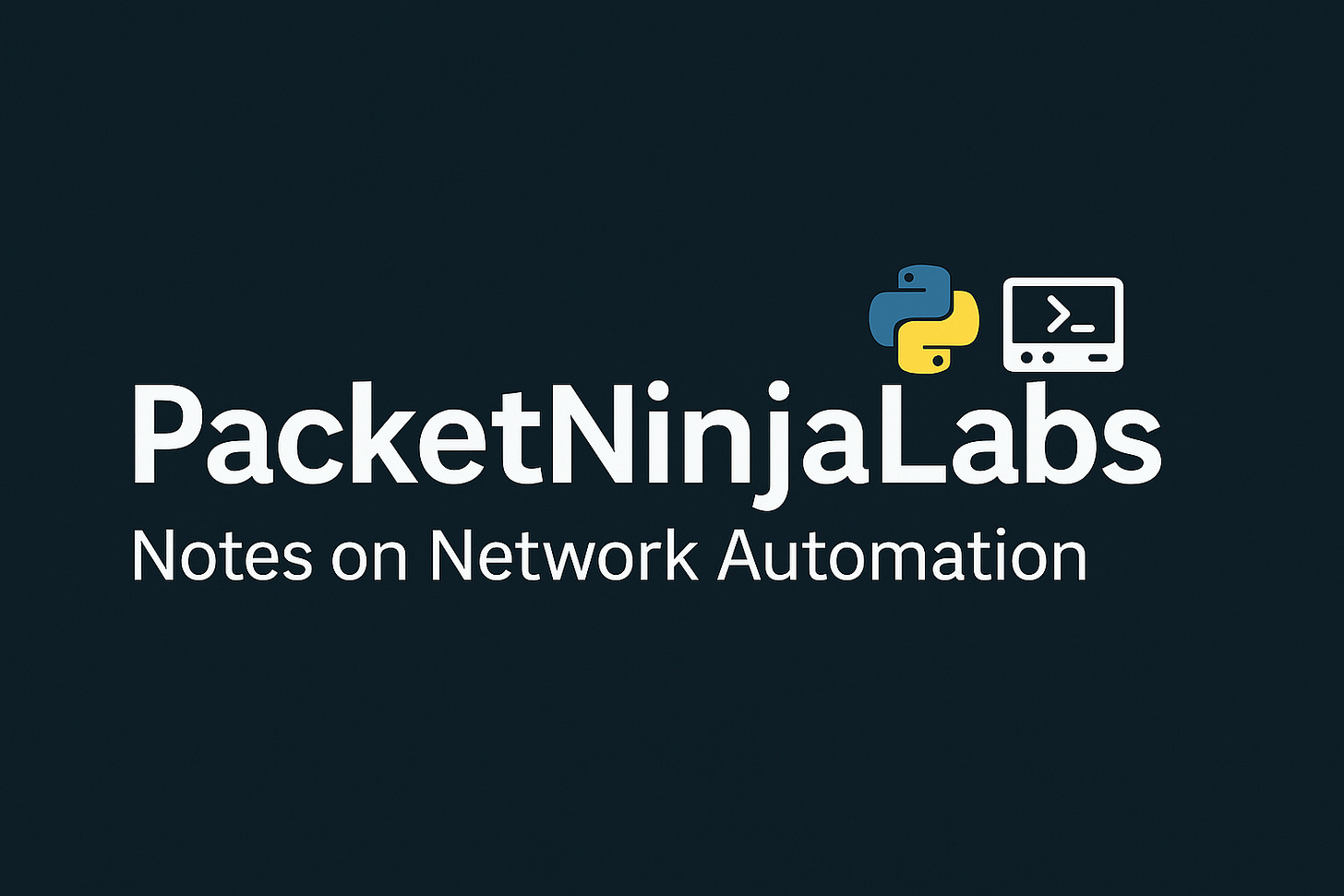Getting Started with Python for Networks
Notes on Network Automation and Cloud
I have spent most of my career working in production networks where downtime is measured in money, not minutes. My background has been low-latency trading environments, Cisco and Arista data centres, and multicast feeds for market data. It is the kind of infrastructure where stability and speed matter.
That world teaches discipline with change control and deep knowledge of protocols. The job market now expects something more. Network engineers are expected to bring automation into the picture. For me, Python is the natural first step.
Why Python?
I am not learning Python to become a software developer. I am learning it because I want to do familiar network tasks faster and with fewer mistakes.
Turn device inventories into data I can reuse
Parse CLI output without copy and paste gymnastics
Automate repeat jobs like backups and interface checks
Python is also the base layer for the rest of the stack. Once I am confident with loops, data structures, and file handling, the same habits carry straight into Ansible for configuration management and Terraform for cloud networking.
A small first step
Here is the sort of script I started with. Nothing clever, just a loop through a list of devices to print their management IPs:
devices = [
{"hostname": "spine1", "mgmt_ip": "10.0.0.11"},
{"hostname": "leaf1", "mgmt_ip": "10.0.0.21"},
]
for d in devices:
print(f"{d['hostname']:10} {d['mgmt_ip']}")
Output:
spine1 10.0.0.11
leaf1 10.0.0.21
It does not change the world, but it does something useful. I have turned information into structured data and looped over it. That is the foundation for every bit of network automation that comes next.
What I am aiming for
Short term:
Build a clean inventory of devices in YAML
Use Python to read it and check basics like IP addresses, roles, and neighbours
Medium term:
Generate configs instead of writing them by hand
Back up running configs automatically
Wire this into GitLab CI so every change gets linted and validated
Start using Ansible playbooks for standard tasks like backups and VLANs
Long term:
Extend the automation mindset into cloud networking
Use Terraform to build VPCs and other cloud infra, while keeping on-prem and cloud consistent with Ansible
Add Kubernetes networking later on, because containers and CNI plugins are now part of the story for modern platforms
This blog is where I will document that journey. I know the networks, that has been my career. Now I am adding the automation skills that the market increasingly demands.
Next up I will share why network engineers should start with Python basics and not jump straight into heavy frameworks.



Sir, thank you for the insights. I am working in support role, have basic experience on networking devices. Its my 4 years, now turning 30...being realized i want to step ahead with myself now towards NETWORKING and automation as next career for long term. Kindly, could you help me Sir. Because i can't efford coaching nor other things, i am relyaing on your posts now. Thank you in advance, Sir.